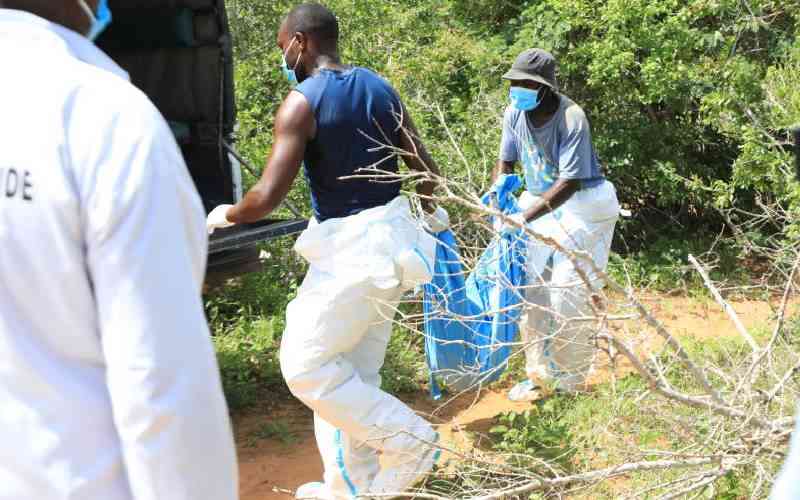In this second instalment of our two part series, our resident travel writer, THORN MULLI, visits another game reserve next to an urban centre; Nakuru.
I had to beat the 5 pm park entry limit and was running late. This was the backdrop as Sammy, at the wheel, and I, nerves taut, hurtled 160 kilometres into the Rift Valley. The black spot riddled Nairobi-Nakuru highway is not one to taunt, so we kept to the speed limit.
Evading Nakuru Town’s dusk traffic, we took the road through Lake View suburb before cutting south, and driving four kilometres to our destination; Nakuru National Park. We made it by the skin of our teeth.
As far as welcome parties go, Flamingo Camp’s is one of the most genuine I have experienced. There was none of the veiled air disenchantment most employees in high-end establishments tend to exude when they realise the guests checking in are ‘only locals’.
From the managers on duty to the kitchen and massage parlour staff, everyone was warm and welcoming despite our late arrival.
As I was led to Tent 18, I took in the rustic décor of the camp’s main building that hosts the reception, fireplace, water bridge that crosses into a lounge, bar, kitchen, and restaurant that opens into a courtyard.
Sculptures depicting the Maasai and paintings of pink flamingo flocks complement the earthen-coloured walls. These two symbols are of special significance: ‘Nakuru’ is derived from Nakurro, the Maa word meaning a ‘dusty place’, and the flamingo is the bird traditionally associated with this area.
After a few minutes under the wide, high pressure shower, I made myself at home in the secluded tent, wait… But it was hard to ignore the fauna grazing and scavenging a stone’s throw away from the camp’s perimeter fence.
Like many Kenyans, I visited Nakuru in my school years. Its popularity then had something to do with the park’s closeness to civilisation, shallow saline lake overflowing with pink birds, abundant wildlife and pocket friendly ranger guided bus tours and education centres managed by Kenya Wildlife Service and the Wildlife Clubs of Kenya. The service is still running so I guess the fad continues.
However, in true Kenyan style, most of these young visitors never make return visits. When they grow up, they cross their fingers and hope that their progeny will be just as lucky.
Currently one of only two fully fenced national parks in Kenya (the other being Aberdares), this park was gazetted in 1968. Before that, in 1961, there was a bird sanctuary to the south of the lake.
With the support of the World Wildlife Fund, the Government launched a scheme to purchase the adjacent grounds in order to widen the protected area. Further efforts in 1968 and 1974 broadened the park limits to its current 188 square kilometres.
STABLE POPULATIONS
In 1974, Rothschild’s giraffes were introduced. Following efforts to increase its rhinoceros population with introductions of black and white rhino from elsewhere in Kenya and from South Africa, the park was declared a rhino sanctuary in 1987.
It today boasts the biggest rhino population in the country. There are also stable populations of antelope, zebra, and buffalo that ensure lions and leopards thrive.
Stay informed. Subscribe to our newsletter
My guide on the afternoon game drive pointed out that about 550 plant species, including the biggest euphorbia forest in Africa, make this a must-visit park.
Add to this the lake, declared a Ramsar Site in 1990, an Important Bird Area in 2009, and part of the ‘Kenya Lake System in the Great Rift Valley’ World Heritage Site in 2011, and you have a winner.
Lake Nakuru, fed by seasonal rivers Njoro, Nderit, Makalia, Naishi and Larmudiak as well as the permanent Baharini Springs, is unusual in that it has no outflow and only loses water by evapotranspiration from its surface.
Partly due to this, the lake has burst its banks and now occupies more than a third of the park; most of the original roads are under water. The lake water supports a dense bloom of the blue-green algae from which it derives its colour.
The algae is also the major food source for the flamingo that I missed, making do with wild duck and great white pelicans.
American ornithologist Roger Tory Peterson, who pioneered modern environmentalism, defined the lake as “the greatest bird spectacle on earth”, and it has been a popular catchphrase ever since.
What won me over, though, were the various viewpoints from which the lake and its surrounding scenic rocky cliffs and outcrops, grassland, marshland, and acacia woodland can be enjoyed. The Lion Hill, Baboon Cliff and Out of Africa ridges offer splendid lookouts over the lake from the eastern and western shores.
MOST SCENIC
For a sundowner, we chose the highest and most scenic of the lookouts, Out of Africa. Nature had other ideas, however, as a troupe of menacing baboons beat us to the spot. These animals have developed a taste for human food and can get vicious if turned down.
As an alternative, we picked a spot near the Makalia Falls. There is no better spot to enjoy kebabs, samosas and a hot beverage as the water rushes in the background and baboons settle for the night on the precarious cliff above.
Sitting in the shadow of what is fondly called ‘Honeymoon Hill’, it is easy to fall in love with this place.
 The Standard Group Plc is a
multi-media organization with investments in media platforms spanning newspaper
print operations, television, radio broadcasting, digital and online services. The
Standard Group is recognized as a leading multi-media house in Kenya with a key
influence in matters of national and international interest.
The Standard Group Plc is a
multi-media organization with investments in media platforms spanning newspaper
print operations, television, radio broadcasting, digital and online services. The
Standard Group is recognized as a leading multi-media house in Kenya with a key
influence in matters of national and international interest.
 The Standard Group Plc is a
multi-media organization with investments in media platforms spanning newspaper
print operations, television, radio broadcasting, digital and online services. The
Standard Group is recognized as a leading multi-media house in Kenya with a key
influence in matters of national and international interest.
The Standard Group Plc is a
multi-media organization with investments in media platforms spanning newspaper
print operations, television, radio broadcasting, digital and online services. The
Standard Group is recognized as a leading multi-media house in Kenya with a key
influence in matters of national and international interest.









